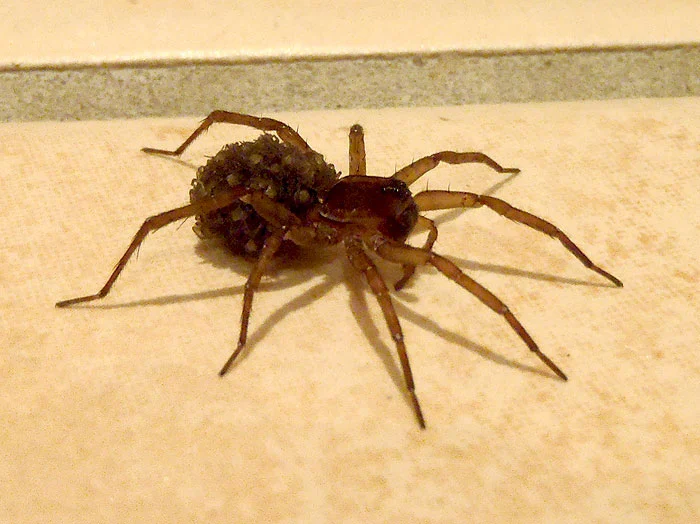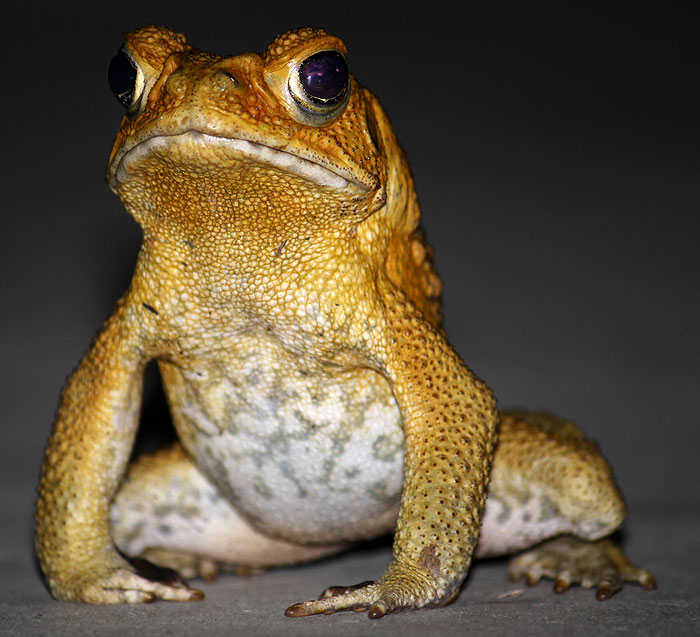Wolf Spider
Here in QLD we have a number of extremely interesting spider species - from Net Casting spiders to the much feared Funnel Web and even our very own Tarantula, all are venomous with varying degrees of danger to humans.
But one spider that I find particularly fascinating is the Wolf Spider. Without the use of webs to ensnare other invertebrates, these ferocious little hunters roam throughout the yard, (and occasionally the house), searching for their prey, and with excellent eyesight for movement run down their victims rendering them immobile with a paralysing injection of venom ... before settling down to suck out the 'soup'.
Females display maternal behaviour generally considered the preserve of 'higher' order animals by carrying their young with them on their backs.
Even more interesting though are the findings of a 2011 study regarding one species Allocosa brasiliensis, a burrowing wolf spider from southern South America:
What this basically implies is that male spiders of this species actively prefer to mate with females that are in good condition thus increasing the chances of breeding success. Furthermore, by eliminating the older less 'desirable' females through cannibalism the genetic strength of a population may be increased (my supposition).
I told ya, interesting stuff eh? ... but for the love of god - don't tell Germaine Greer, she'd have a stroke.
Wolf Spiders possess one highly redeeming feature, they can and do successfully prey on Cane Toads - which is a damned good reason to have them around.
Finally, if you're not a fan of free roaming spiders, but don't really like the idea of turning your home into a chemical war zone, you might try these little guys:
Daddy-long-legs will take care of a vast array of insects and other spiders including the Red-Backed spider - so having a few of these guys quietly sitting in the corner is a good idea (unless you're a neat freak, then they'll drive you to distraction ...). Oh, and that whole urban myth about Daddy-long-leg venom being the most potent in the world?, yeah, well, it's just that, a myth. Their venom is absolutely harmless to humans ... so you can rest easy. Anyway, give nature a turn before ya go nuts with the aerosol - you might just be surprised at the result ...
Take Care
But one spider that I find particularly fascinating is the Wolf Spider. Without the use of webs to ensnare other invertebrates, these ferocious little hunters roam throughout the yard, (and occasionally the house), searching for their prey, and with excellent eyesight for movement run down their victims rendering them immobile with a paralysing injection of venom ... before settling down to suck out the 'soup'.
Females display maternal behaviour generally considered the preserve of 'higher' order animals by carrying their young with them on their backs.
 |
(Lycosidae) |
 |
Consuming its latest victim |
 |
Huntsman |
 |
Unknown rain-forest species |
 |
Another handsome rain-forest species - perhaps (Pandercetes gracilis)? |
 |
Brown huntsman |
 |
Wolf Spider with young |
Even more interesting though are the findings of a 2011 study regarding one species Allocosa brasiliensis, a burrowing wolf spider from southern South America:
*Each of 20 adult males was consecutively exposed to one virgin and one mated female, alternating the order of exposure. Males preferred to mate with virgin females in good body condition and heavier-mated females. Males attacked 15% of virgins and 40% of mated females and cannibalized 10% and 25% of the total trials, respectively. The astonishing male cannibalistic behaviour best agrees with extreme mate choice hypotheses because attacks were more frequent on mated females of low body condition.
What this basically implies is that male spiders of this species actively prefer to mate with females that are in good condition thus increasing the chances of breeding success. Furthermore, by eliminating the older less 'desirable' females through cannibalism the genetic strength of a population may be increased (my supposition).
I told ya, interesting stuff eh? ... but for the love of god - don't tell Germaine Greer, she'd have a stroke.
Wolf Spiders possess one highly redeeming feature, they can and do successfully prey on Cane Toads - which is a damned good reason to have them around.
Finally, if you're not a fan of free roaming spiders, but don't really like the idea of turning your home into a chemical war zone, you might try these little guys:
 |
Daddy-long-leg (Pholcus phalangioides) |
Daddy-long-legs will take care of a vast array of insects and other spiders including the Red-Backed spider - so having a few of these guys quietly sitting in the corner is a good idea (unless you're a neat freak, then they'll drive you to distraction ...). Oh, and that whole urban myth about Daddy-long-leg venom being the most potent in the world?, yeah, well, it's just that, a myth. Their venom is absolutely harmless to humans ... so you can rest easy. Anyway, give nature a turn before ya go nuts with the aerosol - you might just be surprised at the result ...
Take Care
Wolf spiders have several species worldwide with size variations from around 30 mm to hand span. Bites from these spiders aren't considered dangerous to humans although in N. America anti-venom was used up until the early 1990s when a study showed that it was simply not needed.
Strangely, Dogs and Cats are extremely intolerant of Wolf Spider venom, (at least here in Australia) and will die from a bite without medical intervention.
*Aisenberg, A., Costa, F., Macarena, G. Male sexual cannibalism in a sand-dwelling wolf spider with sex role reversal Biological Journal of the Linnean Society (2011)
Strangely, Dogs and Cats are extremely intolerant of Wolf Spider venom, (at least here in Australia) and will die from a bite without medical intervention.
*Aisenberg, A., Costa, F., Macarena, G. Male sexual cannibalism in a sand-dwelling wolf spider with sex role reversal Biological Journal of the Linnean Society (2011)






Comments
Post a Comment